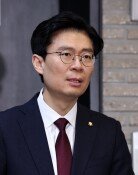Medical Tourism War
Answer the following questions on Asian hospitals. Which hospital is famous for surgery to separate Siamese twins? Which hospital draws more than 300,000 foreign patients from 150 nations? Which hospital provides one-stop and telemedicine service in cooperation with 385 other hospitals worldwide? The answer to the first question is Raffles Hospital in downtown Singapore. Its lobby seems like anything but that of a hospital because it is filled with piano melodies. Patients need not walk around the hospital to find the reception area. Raffles also runs a clinic providing exclusive service for foreigners.
The answer to the second question is Bumrungrad International Hospital in Thailand, the first Asian hospital recognized by Joint Commission International in 2002. The commissions certification is provided by the non-profit organization Joint Commission on Accreditation of Healthcare Organizations for outstanding overseas hospitals outside the U.S. In Southeast Asia, six Thai, 15 Singaporean and 13 Indian hospitals have received the accreditation. In Korea, only three hospitals -- Severance, Korea University Anam, and Chonnam National University Hwasun have the certification. The answer to the third question is Apollo Hospital in India. It provides medical service that would cost 20,000 U.S. dollars in the U.S. for 4,500 dollars. Accordingly, it is far cheaper for a patient to pay 3,000 dollars for round-trip airfare to go to Apollo.
In Korea, hospitals could engage in an intense competition using the case studies of exemplary Southeast Asian hospitals according to Medical War, a book published by Samjong KPMG Economic Research Institute last year. The book says the collapse of medical borders among nations and continents will accelerate a mass exodus of patients and fuel a medical war centered in Southeast Asia. Nevertheless, Koreans have debated for a decade whether to allow foreign hospitals to operate in Korea and whether to introduce for-profit hospitals. The issuance of medical tourist visas for foreign patients also began in May last year.
Only a few nations are ignoring the global trend of attracting foreign patients. To compete with Korea, Japan will consider allowing foreign patients to stay for a prolonged period and introduce a government certification system to enhance the credibility of hospitals. Korea, Japan and China are latecomers in promoting medical tourism. They will inevitably face intense competition from Singapore and Thailand in trying to attract more foreign patients. The competition in the telemedicine market, which is expected to grow rapidly, will intensify further. Dr. Prathap C. Reddy, who founded Apollo Hospital in 1983, has used part of the revenues from medical tourism to provide medical services for the poor. So where is Koreas Dr. Reddy?
Editorial Writer Hong Kwon-hee (konihong@donga.com)







